How to Measure Your Body for Clothes: A Complete Guide
In today’s world of online shopping and custom-made fashion, knowing how to measure your body for clothes is essential. Finding the right fit can be a challenge, with inconsistent sizing across brands often leading to frustration and costly returns. This comprehensive guide provides the solution, empowering you to take accurate measurements and confidently select garments that fit perfectly, saving you time and money while boosting your self-esteem. Whether you’re a seasoned sewist or simply navigating online stores, mastering these techniques ensures a wardrobe that feels as good as it looks. By mastering these techniques, you can confidently choose clothes that fit perfectly.
1. Preparing for Accurate Body Measurements
Taking accurate body measurements is the first step towards finding clothes that truly fit. To ensure precision, it’s crucial to prepare correctly. Before you begin, gather the necessary tools, choose the right attire, and consider enlisting a friend for assistance.
This preparation will lay the groundwork for a successful measurement experience, whether you are ordering custom garments, sewing your own clothes, or simply trying to find the right size when shopping online. By taking these preparatory steps, you are ensuring the most precise and useful measurements possible.
1.1 Gather Your Tools and Materials
The primary tool for taking measurements is a flexible measuring tape, the kind commonly used by tailors. Avoid using a metal tape measure, as it won’t accurately conform to your body’s curves. If you don’t have a flexible measuring tape, you can use a piece of string, ribbon and then measure it against a ruler.
Having these tools on hand will allow you to properly assess your body’s dimensions and ensure that you get the correct fit for your clothes. It’s crucial to have the right tools for the job.
1.2 Dress for Success (or Undress)
What you wear during measurement significantly impacts accuracy. Lightweight clothing, like a thin t-shirt and leggings, or simply your undergarments are ideal. If you typically wear a particular bra style, wear it during the measurement process.
Bulky clothes, such as sweaters or jeans, can add extra inches to your measurements, leading to ill-fitting garments. Removing or avoiding these items is vital for achieving precise results, reflecting your true body size. Ensure your measurements are as close to your natural body as possible for the best fit.
1.3 Enlist a Helper or Use a Mirror
Having a friend assist you can significantly improve measurement accuracy, especially for hard-to-reach areas like your back or shoulders. They can ensure the tape is correctly positioned and level around your body. If measuring yourself, use a full-length mirror to check the tape’s placement, ensure it’s not twisted, and maintain good posture.
Stand tall and naturally to identify your body landmarks accurately. This will help you get accurate measurements every time, even when working alone. Getting someone to help you is always the best option.
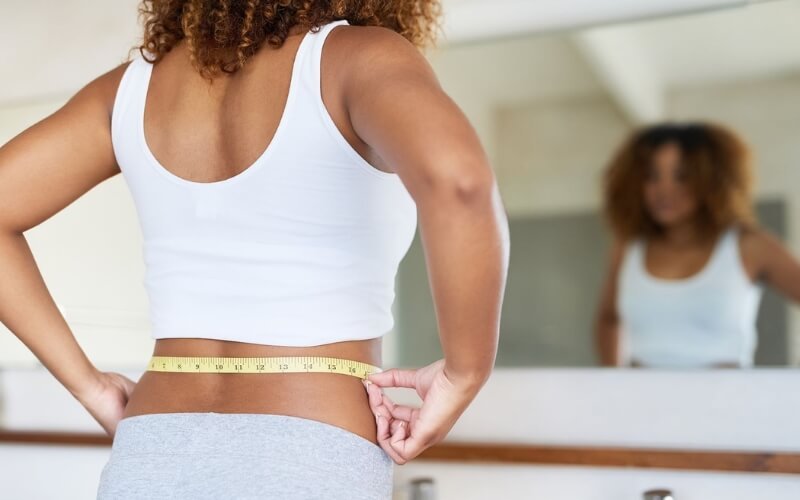
2. Measuring Your Upper Body: A Step-by-Step Guide
This section provides detailed instructions on measuring your upper body, covering essential areas like your neck, bust or chest, natural waist, shoulder width, sleeve length, and waist lengths. Accurate measurements of these areas are crucial for ensuring well-fitting shirts, jackets, and dresses.
By following these steps, you’ll obtain the precise measurements needed for custom tailoring, online shopping, or sewing projects. Having these key measurements—bust measurement, waist measurement, shoulder width, and sleeve length—will help you make informed decisions about your clothing.
2.1 Measuring Your Neck
To measure your neck, place the measuring tape around the base of your neck, where a collar would naturally sit. Ensure the tape is snug but not too tight. If you’re between measurements, always round up to the nearest half inch or centimeter.
This measurement is particularly important for dress shirts and other collared garments. Accurate neck measurements are essential for comfort and a proper fit around the base of the neck. Ensure the tape is level and not twisted.
2.2 How to Measure Your Bust/Chest
For a bust measurement (typically for women), wrap the tape around the fullest point of your bust, usually across the nipples, keeping the tape horizontal. For a chest measurement (typically for men), measure around the broadest part of your chest, under the armpits.
To find your underbust, measure directly under your breasts where a bra band would sit. Ensure the tape is level and parallel to the floor for both bust, underbust, and chest measurements. Keeping the tape measure horizontal around the fullest point is crucial.
2.3 Finding and Measuring Your Natural Waist
Your natural waist is the narrowest point of your torso, typically located above the belly button and below the rib cage. To find it, bend sideways; the crease that forms is your natural waist. Wrap the measuring tape around this point, keeping it snug but not tight.
It’s important to differentiate your natural waist from where your pants sit, especially for low-rise styles. The natural waist measurement is key for fitting dresses and high-waisted garments. Knowing the difference between your natural waist and your pant waist is crucial.
2.4 Measuring Your Shoulder Width
Shoulder width is measured from the tip of one shoulder to the tip of the other, across your back. Stand with your back naturally straight and your shoulders relaxed. Have someone assist you with this measurement for the best result.
This measurement is particularly important for ensuring a good fit in jackets and other structured garments. Accurate shoulder width measurements help to ensure that your clothes hang properly from the shoulder tip. Maintain good posture while taking this measurement.
2.5 How to Measure Sleeve Length
There are two ways to measure sleeve length. One is to start from the center back of your neck, measure across your shoulder, and down your bent arm to your wrist. The other is to start at the shoulder tip and measure down to where you want the sleeve to end, typically at the wrist bone, with your elbow bent at a 90-degree angle.
A professional seamstress might use the former, while the latter is helpful for personal use. Note that these different methods will yield different results, so choose one and use it consistently. Bending your elbow is crucial for an accurate sleeve length.
2.6 Measuring Your Front and Back Waist Length
Front waist length is measured from the high point of your shoulder (next to the base of your neck), over the fullest part of your bust, down to your natural waist. Back waist length is measured from the base of your neck at the center of your back down to your natural waist.
These measurements are particularly important for tailored garments, ensuring they fit your torso length correctly. Precise front and back waist length measurements are vital for achieving a perfect fit in custom-made clothing. These are not common measurements but can be helpful for custom projects.
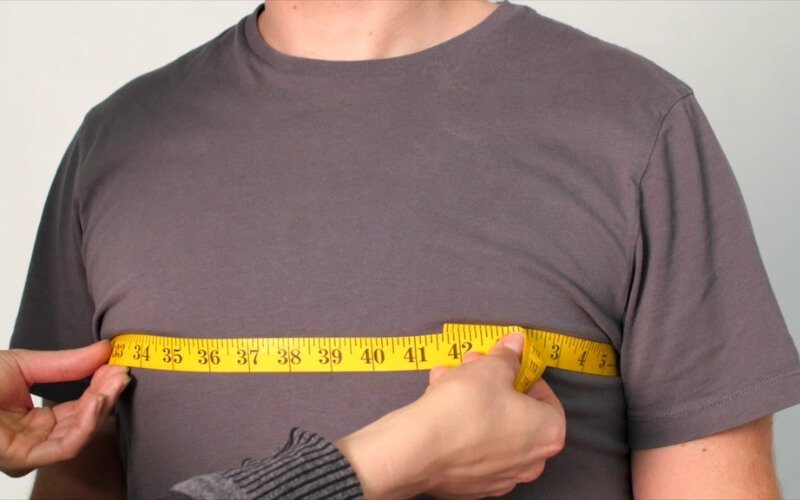
3. Lower Body Measurements: Hips, Thighs, and Inseam
This section guides you through taking accurate measurements of your lower body, including your hips, thighs, inseam, and other essential areas. These measurements are crucial for finding well-fitting pants, skirts, and other lower-body garments. Key measurements such as hip measurement, inseam, and thigh measurement will help you create or select clothes that fit comfortably and flatter your figure.
We’ll also cover more specialized measurements like high hip and crotch depth, which are particularly useful for tailoring and custom clothing. Accurate lower body measurements are just as important as upper body measurements.
3.1 Measuring Your Hips
To measure your hips, wrap the tape around the widest part of your hips and buttocks. Stand with your feet about 6 inches apart, or close together. Ensure the tape is level and parallel to the floor. You may also want to measure the distance from your natural waist to the widest point of your hips for garment fitting purposes.
This hip measurement is crucial for determining the correct size and fit for various types of clothing. Getting the fullest point of your hip is important for most clothing.
3.2 Measuring Your High Hip
The high hip measurement is taken around the fullest part of your lower torso, about 3-4 inches below your natural waist. This measurement is distinct from your full hip measurement and is especially helpful for clothing size determination, particularly with fitted garments or certain styles of pants and skirts.
It’s important to distinguish between your high hip and your hip, as they will be used to determine different aspects of your clothing’s fit. Knowing your high hip measurement can help you choose styles that flatter your body shape.
3.3 Thigh, Knee, Calf, and Ankle Measurements
For the thigh, measure around the widest part, usually just below the crotch. For the knee, measure around the widest part, typically over the kneecap. For the calf, find the widest part and measure around it. Lastly, for the ankle, measure around the narrowest part, just above the ankle bone.
These measurements help in understanding your body proportions and are particularly useful when buying or making fitted pants, leggings, or certain styles of dresses. Knowing your measurements for your thigh, knee, calf, and ankle is great for custom clothing.
3.4 Measuring Your Crotch Length and Depth
Crotch length is measured from your natural waist at the front, through your legs, to your natural waist at the back. Crotch depth is measured while sitting on a flat surface; measure from your natural waist down to the surface.
These measurements are essential for ensuring a good fit in pants and other fitted garments. A tailor will often use these measurements to customize the fit of your trousers. Proper crotch length and depth measurements are crucial for comfort and mobility in your clothing.
3.5 How to Measure Your Inseam
The inseam is the distance from your crotch to where you want the pants to end at your ankle. It’s easiest to have someone help you with this measurement. Stand straight with shoes off, and measure from the crotch down the inside of your leg to the desired length.
Alternatively, you can measure the inseam of a pair of well-fitting pants. Accurate inseam measurements are vital for determining the correct length of pants for your leg length. With DIY body measurement, you can use this number when shopping online.
3.6 Measuring Your Outseam
The outseam is measured along the outside of your leg, from your natural waist to the bottom of your ankle. This measurement is different from the inseam and is used to determine the overall length of pants or skirts. The outseam is important for ensuring that garments are the proper length for your body.
Knowing your outseam can help you make better decisions about clothing fit. Ensure the tape measure runs straight down the outside of your leg.
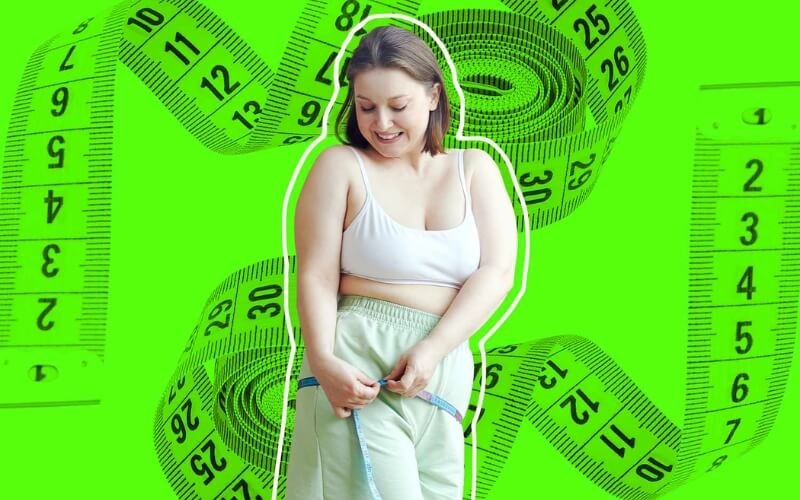
4. Understanding Size Charts and Garment Measurements
Navigating the world of clothing sizes can be complex. This section clarifies the difference between body measurements and garment measurements, explains how to use a size chart effectively, and touches upon international sizing systems.
Understanding these concepts is essential for making informed decisions when shopping for clothes, whether online or in-store. By using a detailed fit guide and proper body measurement tutorial, you can confidently select the right clothing size. Being able to use size charts is a skill that will greatly improve your shopping experience.
4.1 Body Measurements vs. Garment Measurements
Body measurements are taken directly from your body, as detailed in the previous sections. Garment measurements, on the other hand, refer to the dimensions of the finished garment itself. The key difference is that garment measurements include “ease allowance,” which is extra fabric added for comfort, movement, and style.
Ease can vary depending on the garment’s design and intended fit. Understanding this distinction is crucial for both sewing and selecting ready-to-wear clothes. Always remember that the size of a garment is not the same as your body measurements.
4.2 How to Use a Size Chart Effectively
When shopping online or using a sewing pattern, always compare your body measurements to the brand-specific size chart provided. Size charts list the garment measurements for each size. Due to vanity sizing and variations in design, sizing can differ significantly between brands.
Don’t rely solely on your usual clothing size; always consult the chart for each item. Comparing your measurements to the size chart is the most reliable way to determine the best fit for your body when online shopping. If you are unsure, it’s always a good idea to reach out to the retailer.
4.3 International Size Charts and Conversions
Clothing sizes vary across countries. A US size 8 is not the same as a UK size 8 or an EU size 38. When shopping from international brands or using patterns from different regions, it’s essential to be aware of these differences.
Many websites offer size conversion tools or charts to help you find your equivalent size in different sizing systems. Familiarizing yourself with international size charts and using pattern-making resources for conversions can be very helpful when dealing with global brands.
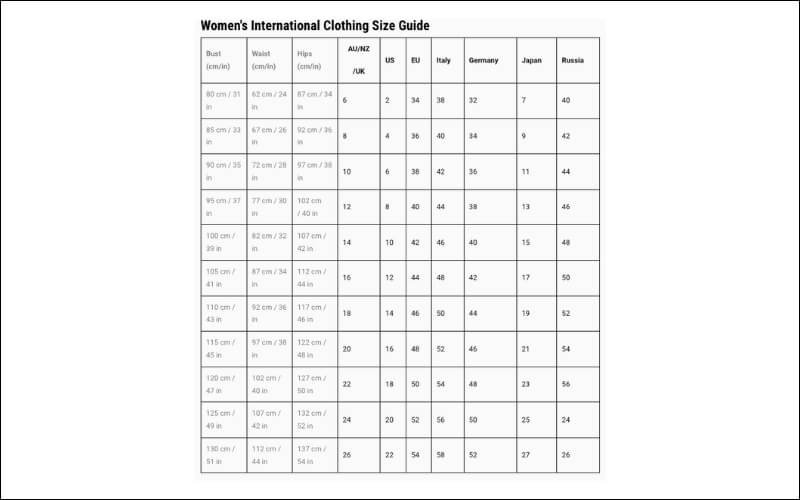
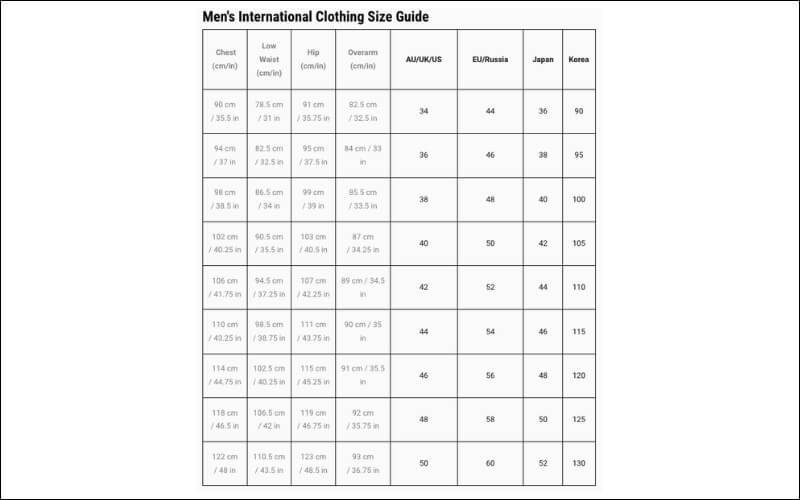
5. Special Considerations and Tips for Specific Garments
To determine your hat size, measure the circumference of your head just above your ears, where a hat would naturally sit. Ensure the tape is level and snug but not too tight. This head circumference measurement corresponds to specific hat sizes, which can vary slightly between manufacturers.
It is important that your hat is neither too loose nor too tight. This is a simple measurement that will ensure your hats fit you perfectly in the realm of fashion design.
5.1 Measuring for Bra Sizes
Accurate bra sizing involves two key measurements: underbust and bust. To measure your underbust, wrap the tape snugly around your ribcage, just below your breasts. To measure your bust, wrap the tape around the fullest part of your bust, usually across the nipples.
These two measurements are used to determine your band size and cup size, respectively. Refer to a comprehensive bra size calculator or guide for detailed instructions on calculating your bra size. Knowing your correct bra size is essential for both comfort and support.
5.2 Measuring for Hats
To determine your hat size, measure the circumference of your head just above your ears, where a hat would naturally sit. Ensure the tape is level and snug but not too tight. This head circumference measurement corresponds to specific hat sizes, which can vary slightly between manufacturers.
It is important that your hat is neither too loose nor too tight. This is a simple measurement that will ensure your hats fit you perfectly in the realm of fashion design.
5.3 Considering Ease and Fabric Type
Remember that ease allowance—the extra fabric added to a garment for comfort and movement—varies depending on the garment type and fabric type. A tailored jacket will have less ease than a loose-fitting blouse. Additionally, fabric type significantly impacts fit.
Stretch fabrics, like jersey or spandex blends, may require less ease than non-stretch fabrics like woven cotton or linen. Understanding how ease and fabric interact is essential for achieving the desired fit and comfort, and may be a factor when considering clothing alterations. Always consider the fabric’s properties when taking measurements or selecting a size.
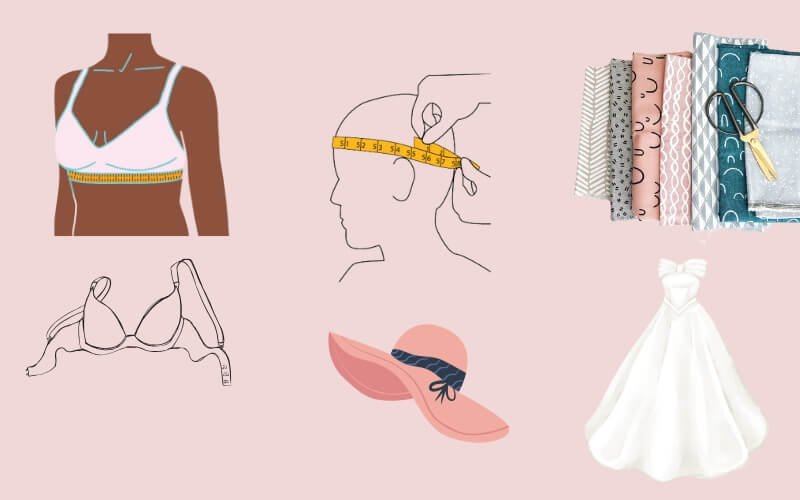
6. FAQs about How to Measure Your Body for Clothes
6.1 How often should I measure myself?
It’s recommended to measure yourself every six months or whenever you experience significant weight changes or body transformations. Bodies change over time, and regular measurements ensure your clothing continues to fit well. Even if you don’t think you’ve changed, it’s a good idea to check periodically.
6.2 What is the best time of day to take measurements?
It’s generally best to measure yourself in the morning before eating or drinking, as your body can fluctuate throughout the day due to food and fluid intake. Measuring in the morning will give you a more consistent baseline. However, if you’re sewing a garment for a specific event, measuring yourself at the time of day you’ll be wearing it might be helpful.
6.3 How do I account for bloating when measuring?
If you tend to bloat, consider measuring yourself on a day when you feel your average size. You can also take measurements at different times of the day and average them out. This will give you a more realistic idea of your typical measurements. Some people find it helpful to measure both in the morning and the evening.
6.4 Should I measure over or under my clothes?
Always measure over your undergarments or very light, form-fitting clothing for the most accurate results. Bulky clothes will distort your measurements and lead to inaccurate sizing. Measuring over undergarments provides the most accurate reflection of your body’s dimensions. For best results, wear the undergarments you plan to wear with the finished garment.
6.5 How tight should the measuring tape be?
The tape should be snug but not tight. You should be able to fit one finger comfortably underneath the tape. If the tape is too tight, it will compress your body and give you smaller measurements than you actually are. A too-loose tape will result in measurements that are too large.
7. My Pack Love – Providing Service for Customization Tailoring and Clothes
My Pack Love understands that everyone deserves to feel confident and comfortable in their clothes. We offer expert custom tailoring services, crafting well-fitting garments based on your precise body measurements and individual preferences.
Our team is skilled in translating your measurements into clothing that fits you perfectly, whether you’re looking for a special occasion outfit or everyday wear. Additionally, we can create custom Woven Labels, Heat Transfer Labels, and Rubber Labels to add a professional and unique touch to your clothing brand. With My Pack Love, you can trust that your custom clothing will be made to your exact specifications.
Read more:
Accurate body measurements are the foundation of finding the perfect fit, whether you’re shopping online, sewing your own clothes, or seeking custom tailoring. By following the techniques outlined in this guide, you can confidently measure yourself and unlock a world of well-fitting garments. This will not only save you time and money but also boost your confidence, knowing that your clothes truly reflect your unique body shape. So, grab your measuring tape, refer back to this guide whenever needed, and start your journey toward a wardrobe that fits you perfectly. And remember, My Pack Love is here to help you achieve your custom clothing dreams with our expert tailoring and labeling services.






















